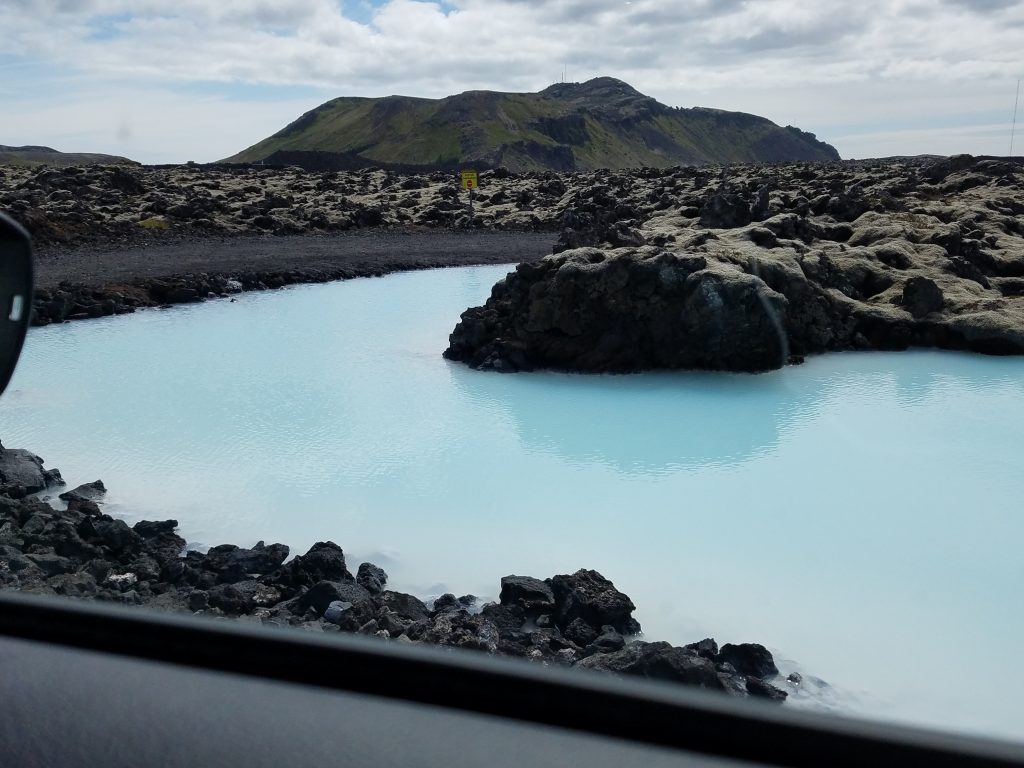Soaking in an Icelandic Spa: How Senses and Memory Intersect

This summer, my husband and I traveled to Iceland. Among other wonders of nature, we visited the Blue Lagoon, a spa formed 40 years ago during the creation of a geothermal power plant. Today, people come from all over to bathe in the warm, soothing water.
There are a surprising number of things to do at the Blue Lagoon. You can laze underneath a man-made waterfall, order a drink from the bar, or even enjoy a massage in the water. We wandered across the bridges over the pool and explored the area. We even used the silica clay as a mud mask to soften our skin and further the sense of relaxation.
Even with all the amenities, I was spellbound first and foremost by the setting. The water, turned a beautiful blue-green by naturally occurring algae, had a temperature of 100 degrees Fahrenheit – about 45 degrees warmer than the air. This contrast between water and air made the warm pools feel even more comfortable and welcoming.
With nearly 20 hours of sunlight in July, it didn’t feel strange to be soaking outside at nearly any time of day. In the daylight, I was able to appreciate the setting clearly. Lava fields topped with moss surround the pool. When I closed my eyes, I heard the gentle cascade of the waterfall. With everything I felt, saw and heard, the Blue Lagoon was an immersion for the senses.
Research shows that these strong sensory impressions could help me remember my visit: a specific sight or sound can bring back a particular memory, and there’s a very good reason for it. “The same part of our brain that’s in charge of processing our senses is also responsible, at least in part, for storing emotional memories,” writes Rachel Reittner on livescience.com.
This storage receptacle is known as the sensory cortex. Benedetto Sachetti, a researcher in Italy, conducted an experiment with rats in which he trained the rodents to associate a specific sound with an electric shock. The rats would freeze upon hearing the sound, but after the scientists created lesions on the rats’ sensory auditory cortexes, they froze less frequently. This suggested the rats correlated the sound with the electric shock, and could no longer do so after their lesions (Sacco & Sachetti (2010). Role of Secondary Sensory Cortices in Emotional Memory Storage. Science, 329 (5992), pp. 649-656.)
The practice of mindfulness can include focusing one’s attention on the senses, and there is evidentiary support that it, too, helps memory. In another experiment led by Michael Mrazek, a graduate student at UC Santa Barbara, undergraduates were directed to take a class in either mindfulness or nutrition for two weeks. “The students in the mindfulness group were taught how to pay attention to their sensory processes, like tasting food and breathing,” writes Alice G. Walton in an article describing the experiment.
The students’ recall was tested both by working memory tests and a verbal GRE (graduate admissions) exercise. After one week of instruction, the mindfulness group improved more than the nutrition group in both assessments.
The takeaway? The senses have a big role in memory retention. If possible, try to incorporate a strong sensory component into your instructional design. Oh, and the trip to the Blue Lagoon was amazing….just ask me in 10 years. I’ll remember.
For case studies see our post on Using Multiple Senses to Improve Learning.


